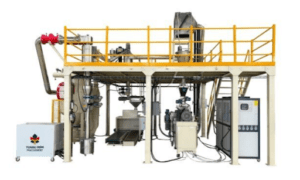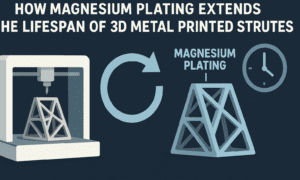South Korean researchers have developed a lightweight wearable robot that can walk up to paraplegic users and lock itself onto them, enabling them to walk, manoeuvre obstacles, and climb staircases.
TakeAway Points:
- A lightweight wearable robot created by South Korean researchers can approach paraplegic patients and secure itself to them, allowing them to move, navigate obstacles, and ascend stairs.
- The Exoskeleton Laboratory team at the Korea Advanced Institute of Science and Technology (KAIST) said their goal is to create a robot that seamlessly integrates into the daily lives of individuals with disabilities.
- Talen Energy plans to contest the Federal Energy Regulatory Commission’s (FERC) rejection of an amended interconnection agreement for an Amazon data center at its Pennsylvania nuclear plant.
South Korean team develops ‘Iron Man’ robot that helps paraplegics walk
The Exoskeleton Laboratory team at the Korea Advanced Institute of Science and Technology (KAIST) said their goal is to create a robot that seamlessly integrates into the daily lives of individuals with disabilities.
Kim Seung-hwan, who is himself paraplegic and part of the KAIST team, demonstrated the prototype, which helped him walk at a speed of 3.2 kph (2 mph), climb a flight of stairs and take sideways steps to slide into a bench.
“It can approach me wherever I am, even when I’m sitting in a wheelchair, and be worn to help me stand up, which is one of its most distinct features,” Kim said.
The powered exoskeleton, named WalkON Suit F1, features an aluminium and titanium composition to weigh in at 50 kg (110 lb) and is powered by 12 electronic motors that simulate the movements of human joints while walking.
Park Jeong-su, another member of the KAIST team, said he was inspired by the movie “Iron Man”. “After watching Iron Man, I thought it would be great if I can help people with a robot in real life.”
To ensure the user’s balance while walking, the robot is equipped with sensors on its soles and in the upper body that monitor 1,000 signals per second and anticipate the user’s intended movements.
Lenses on the front of the robot work as eyes that analyse its surroundings, identify the height of stairs and detect obstacles to compensate for the lack of sensory ability of users with complete paraplegia, Park said.
Kim Seung-hwan won the gold medal while wearing the WalkON Suit F1 in the exoskeleton category at Cybathlon 2024, which saw developers with varying physical disabilities demonstrate assistive robots in eight categories.
“I wanted to tell my son… that I also used to be able to walk. I wanted to share a diverse range of experiences with him,” said Kim.
Talen Energy to appeal FERC’s rejection of Amazon data center deal
At its nuclear facility in Pennsylvania, Talen Energy announced Monday that it will challenge the Federal Energy Regulatory Commission’s (FERC) decision to reject a revised interconnection deal for an Amazon data centre.
The U.S. utility earlier this year sold a data center connected to its Susquehanna nuclear power plant to Amazon and hoped to increase its capacity from 300 megawatts to 480 megawatts.
The deal, however, faced opposition from American Electric Power and Exelon.
FERC, in an order issued on Nov. 1, sided with the two regulated utilities and blocked the interconnection agreement.
Talen last month filed a request for a rehearing, to which the regulator responded on Monday, stating it would address the request in a future order.
As FERC did not decide on the rehearing request within 30 days, the decision to reject the amended interconnection agreement is now eligible for an appeal to a U.S. Circuit Court of Appeals, Talen Energy said in a statement.
Shares of the company, which have more than tripled this year, were up 0.6% in afternoon trading.



































